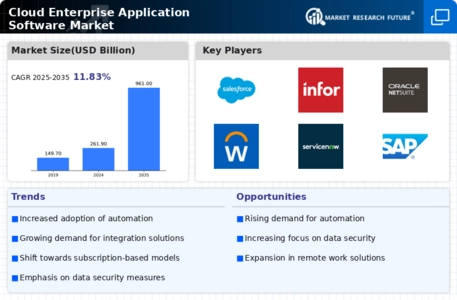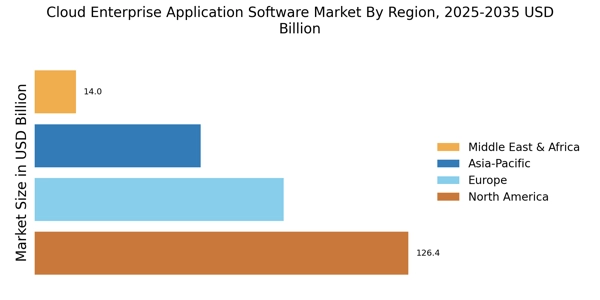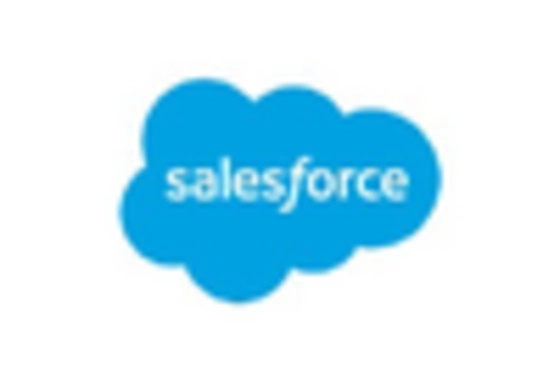The Cloud Enterprise Application Software Market is currently characterized by a dynamic competitive landscape, driven by rapid technological advancements and an increasing demand for digital transformation across various sectors. Major players such as Microsoft (US), Salesforce (US), and SAP (DE) are strategically positioning themselves to leverage these trends. Microsoft (US) focuses on integrating artificial intelligence into its cloud offerings, enhancing user experience and operational efficiency. Salesforce (US) emphasizes customer relationship management through innovative cloud solutions, while SAP (DE) is concentrating on enterprise resource planning systems that facilitate seamless business operations. Collectively, these strategies not only enhance their market presence but also intensify competition, as companies strive to differentiate themselves through innovation and customer-centric solutions.
In terms of business tactics, companies are increasingly localizing their operations to better serve regional markets, optimizing supply chains to enhance efficiency, and investing in partnerships that foster innovation. The market structure appears moderately fragmented, with a mix of established players and emerging startups. This fragmentation allows for diverse offerings, yet the collective influence of key players like Oracle (US) and IBM (US) shapes the competitive dynamics significantly, as they continue to invest heavily in research and development to maintain their market positions.
In September 2025, Salesforce (US) announced a strategic partnership with a leading AI firm to enhance its cloud-based analytics capabilities. This move is likely to bolster Salesforce's competitive edge by providing clients with advanced data insights, thereby improving decision-making processes. Such partnerships indicate a trend towards integrating cutting-edge technologies into existing platforms, which could redefine customer engagement strategies in the cloud space.
In August 2025, SAP (DE) launched a new suite of cloud applications aimed at small to medium-sized enterprises (SMEs), focusing on affordability and ease of use. This initiative is significant as it opens new market segments for SAP, allowing it to tap into a previously underserved customer base. By catering to SMEs, SAP not only diversifies its revenue streams but also strengthens its position against competitors who may overlook this segment.
In July 2025, Oracle (US) expanded its cloud infrastructure services in Asia-Pacific, aiming to capture the growing demand for cloud solutions in emerging markets. This expansion is crucial as it positions Oracle to capitalize on the rapid digitalization occurring in these regions, potentially leading to increased market share and enhanced brand recognition. Such geographical diversification strategies are indicative of a broader trend where companies seek to mitigate risks associated with market saturation in developed economies.
As of October 2025, the competitive trends in the Cloud Enterprise Application Software Market are increasingly defined by digitalization, sustainability, and the integration of artificial intelligence. Strategic alliances are becoming pivotal, as companies recognize the need to collaborate to innovate and meet evolving customer demands. Looking ahead, competitive differentiation is likely to shift from traditional price-based competition to a focus on innovation, technological advancements, and supply chain reliability, as organizations strive to deliver superior value in an ever-evolving market landscape.


















Leave a Comment